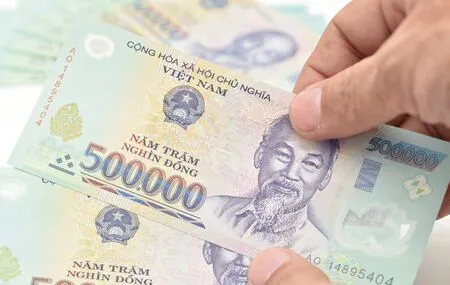My Stock Trading Journey in Vietnam
Story told by Yang Min Compiled by Sun Feng
I first noticed the Vietnamese stock market in 2016. I had been doing various jobs related to the overseas investment market and was closely following Southeast Asian cities like Singapore, Thailand,and Malaysia, but something happened in Vietnam at that point which grabbed my interest.
A Tidbit of News Worth a Mountain of Money
In September of that year, I read fromTalk Vietnam, a newspaper I subscribed to, that within a year and a half the Vietnamese government would withdraw state-owned shares from the two major beer giants, Saigon Brewery and Hanoi Beer, which would mark the beginning of Vietnamese state-owned asset reform. From 2017 to 2020, the Vietnamese government plans to withdraw funds from 406 state-owned enterprises while inviting in foreign capital with all deliberate speed.
This news opened my eyes to Vietnam’s capital market. The Vietnamese stock market, which was established on the Ho Chi Minh Stock Exchange in 2000,started from a modest two or three stocks and 100-point index and cycled through the global bull market from 2006 to 2008,once reaching 1,179 points. In comparison, China A shares were established more than 10 years earlier, yet maxed out at only 5499.6 points.
The ensuing financial crisis forced it back down to around 250 points. The Vietnamese government concurrently tightened its financial policy,resulting in a sluggish stock market. It continued to fall between 2008 and 2013, with the index dropped to a low of 88 points and a high of a paltry 470 points.

我一直做境外投资市场观察的相关工作,东南亚市场一般关注的都是新加坡、泰国、马来西亚这些国家。但2016年发生的一件事情,让我对越南产生浓厚兴趣。
一则消息值千金
那年9月,我订阅的报纸《谈论越南》里出现一则消息,大意是说越南政府将在一年半内,从两大啤酒巨头西贡啤酒公司和河内啤酒公司撤出国有股份。这标志着越南国有资产改革拉开序幕:2017年至2020年,越南政府计划从406家国有企业撤资,同时大力引入国外资本。
这则消息引起了我对越南资本市场的注意。越南股市自2000年起在胡志明证券交易所创立,从两三只股票、100点指数开始,经过2006年至2008年的全球性牛市,最高达到1179点。而比它早10多年成立的中国A股,最高才5499.6点。
随之而来的金融危机,瞬间将它打回到250点附近。越南政府大力收紧金融政策,股市几乎腰斩,经过2008年至2013年的不断下跌,指数下降到88点,最高时才470点。
这次越南政府的经济改革,让我联想到越南的四大现象。
第一,我经常在越南各大银行门口看到年利率高达7%左右的存款广告,当然,贷款利率高,说明股票市场不景气、工商企业减少投资、民众减少消费。第二,我发现在越南租房很贵,而靠出租房屋可带来7%至8%的年回报率,消费转化成了价值投资。第三,越南的老板很有钱。因为买股票的少,政府为缓解上市企业的融资困境,推出一系列减税政策,使得许多上市企业税后利润很高,开工厂就等于赚大钱。最后,在首都胡志明市,你会看到摩托车来来往往,异常忙碌,百姓一门心思搞经济,没多少人关心金融和股票,极像中国改革开放之初,股市刚刚成立的情形。
连续多年的通货膨胀,让越南股市只需45万多美元实缴注册成本,就可以申请上市,近半上市公司市盈率低于10倍,将近90%上市公司市净率低于2倍。多年的熊市,让越南股票价值严重被低估。
The Vietnamese government’s economic reforms reminded me of four major phenomena in Vietnam.
First, I have often seen advertisements for deposits with annual interest rates as high as 7% at the entrance of major banks in Vietnam. Of course, the high interest rate indicated a bearish stock market, reduced industrial and commercial investment, and decreased spending by average people.
Second, I found that rents in Vietnam were expensive, while renting out property could bring an annual return of 7% to 8%,which means consumption was converted into value investment.
Third, factory owners in Vietnam were very rich. Because not many people were buying stocks here, and the government had introduced a series of tax reduction policies to ease the financing difficulties of publicly listed companies. As a result,many of these firms had high after-tax pro fit margins. Opening a factory meant making a mint.
Finally, in the capital Ho Chi Minh City, motorcycles can be seen busily coming and going,with people focused on economic development. Not many people are concerned about finances and stocks, exactly like what happened in China when the Open-up Policy had just begun and stock markets were newly established.
After many years of inflation,the sum of 450,000 US dollars was required to pay for the registration fees to apply for listing in Vietnamese stock market. Nearly half of these public companies had a price-toearnings ratio less than 10 times,and nearly 90% of them had a price-to-book ratio of less than 2 times. Many a year’s bear market had led to a seriously undervalued Vietnamese stock market.
Picking up a Bargain Stock in the Bear market
There is a secret to knowing where to find bargain stocks in the bear market, most especially when the bear market constantly comes back with good news.
Analyzing Vietnam at the micro-level I discovered there are vast numbers of young people in the country. According to statistics, the average age of Vietnam’s population of over 100 million is made up of young people less than 30 years old.Its annual GDP growth rate is 6.2%, second only to China. the minimum wage is 224 US dollars,only one-third of China’s. Many factors including the rise of young consumer groups has made Vietnam extremely attractive.
Analyzing Vietnam on the macro-level, I found that there had been massive progress in Vietnam’s infrastructure,the people’s livelihood, and manufacturing industries after years of hard work. More importantly, Vietnam had signed a number of free trade agreements with China, the United States,Japan, the United Kingdom,Australia, and other countries that account for about 80% of the global GDP. With China’s Belt and Road initiative and a series of multilateral trade agreements or proposals signed, the economic stimulus to and open attitude of Vietnam towards trade had taken the lead throughout Southeast Asia.
With a series of financial deregulations, on September 8, 2017, the Vietnamese stock market broke through 800 points which it had failed to reach for 10 years. In 2017, the market value of the Vietnamese stock market reached 3,500 trillion dong (1 Chinese yuan equals to 3617 Vietnamese dong), a year-on-year increase of 80.5%, equivalent to 70.2% of the GDP, while the stock market’s liquidity increased by 66%. The total net purchase made by overseas investors amounted to 4,617 trillion dong, the highest level in 10 years. It can only be described as investment on an otherworldly scale.
Top Ten and Trend Investing
On January 22, 2018, at the close of market trading in the Ho Chi Minh City stock exchange,trading volume rose so sharply that technical problems occurred and the market was closed for two days.
熊市大胆捡便宜
在熊市捡便宜,是炒股一大诀窍。当熊市不断遇上利好消息时,更是捡便宜的上佳时间。
在更微观层面上,我发现越南到处都是年轻人。据统计,越南人口超过1亿,平均年龄低于30岁。年GDP增长率达6.2%,仅次于中国;最低工资224美元,仅为中国的三分之一。年轻消费群体崛起等多项因素,决定了越南的吸引力。
放大到宏观层面,我发现经过几年时间的埋头苦干,越南基建、民生、制造业等出现极大的复苏。更重要的是,越南与中国、美国、日本、英国、澳大利亚等占全球GDP约80%的国家,签订自贸协定,一带一路等多项多边经贸协议或倡议,经济刺激和开放态度领先整个东南亚地区。
随着一系列对金融政策的松绑,2017年9月8日,越南股市冲破10年来未能冲上的800点。2017年越南股市市值达3500万亿盾(1人民币=3617.1196越南盾),同比增长80.5%,相当于GDP的70.2%,股市流动性增长66%。境外投资者净买入总额达4617万亿盾,为10年来最高值,可谓是水大鱼大。
十大板块与趋势投资
2018年1月22日,在胡志明市股票交易市场收盘集合竞价时间,交易所交易系统因交易量迅猛上涨,发生技术问题,休市两天。
股市火爆到交易所崩溃,这在全球资本市场都是难得一见的。但若要具体到买哪一只股票会赚,我只能说见仁见智了。不过关注以下十个板块,至少会成倍地降低失败率。
它们分别是房地产、银行金融、证券、医疗药品、机场、塑料管、建筑、信息技术、钢铁、纺织这十个产业板块。

前几年,我买了两只股票,一只是空调股——越南一年到头都很热,当时经常停电;另一只是电缆通信股,因为我看到越来越多的年轻人开始玩起了手机游戏,相信这两只股会大大受益于越南经济的发展。两年时间内,这两只股票给我带来十几倍的收益。
在我看来,越南现在的股市,属于趋势投资。在宏观和微观经济政策不断正向刺激的情况下,看对了趋势,任何一个消息都是利好。其实这种选股逻辑,完全可以照搬20世纪90年代在中国股市的投资。
越南国有资产改革带来了空前的利好。比如,在越南,很多国企已取消其外资持股限制,包括Vinamilk、Domesco、CMC、evetpia等大型公司。同时,越南拟取消67种经营业务的限制条件,以吸引外资流入。
在这种情况下,包括三星、LG、英特尔等企业都开始在越南扩大产能。这两年,越南预计将迎来高达200家的IP0高峰,类似于中国2005年的股改之后,A股爆发一轮大牛市。
而在2016年IPO的西贡啤酒、越南橡胶集团、滨城集团、黑水、越捷航空等公司,作为消费品、工业品、房地产、基建、航空方面的代表,都分别完成了股改,并实现在股市方面的资本增值。
股市无定法。股市有风险,入市需谨慎。这句话放在入局越南市场时更为重要。除了由于地域原因,对越南股市不易深入了解之外,越南政治的稳定性、经济政策的可持续性等方面,都是需要考虑的因素。
(摘自《商界》2018年第3期)
The stock market was so hot that exchanges collapsed, which is rare even in global capital markets. However, in terms of which specific stocks have earning potential, I can only say that’s a matter of opinion. However,focusing on the following ten will at least mitigate the risk.
My personal top ten is real estate, banking finance, securities,pharmaceuticals, airports, plastic pipes, construction, information technology, steel, and textiles.
In the past few years, I have bought two stocks, one was an air-conditioner stock, since Vietnam was hot all year round and blackouts were frequent at the time; the other was a cable communication stock, because I saw more and more young people starting to play games on their mobile phones. I believed these two stocks would greatly benefit from Vietnam’s economic development. And in two years,these two stocks increased in value tenfold.
In my opinion, the current stock market in Vietnam is more about trend investment. With the positive and stimulating macro and microeconomic policies, catching the right wave will just result in good news for the investor. In fact, this stock selection logic is an absolute mirror image of the Chinese stock market in the 1990s.
The state-owned assets reform in Vietnam has brought unprecedented benefits. For example, in Vietnam, many state-owned enterprises have cancelled their foreign ownership restrictions, including large companies such as Vinamilk,Domesco, CMC, and Evetpia. At the same time, Vietnam intends to abolish the restrictions on 67 types of business operations in order to attract foreign capital inflows.
In this case, companies including Samsung, LG, and Intel have begun to expand production capacity in Vietnam. In the next two years, Vietnam is expected to see as many as 200 IPO peaks,which may be similar to what happened after China’s stock reform in 2005, that saw a big bull market break out in A shares.
Companies IPOed in 2016 like Saigon Beer, Vietnam Rubber Group, Ben Thanh Group,Blackwater, and Viet Jaya Airlines, as the representatives of consumer products,industrial products, real estate,infrastructure, and aviation, have all completed their share reforms and achieved capital appreciation in the stock market.
The Vietnamese stock market comes with no guarantees, there is a myriad of risks, and one should exercise great caution upon entering. The Vietnamese market is not for the weak or the timid.Besides the geographical reasons making it difficult to understand the depths of Vietnam’s stock market, other factors also need to be taken into consideration,such as the stability of Vietnam’s politics and the sustainability of its economic policies.
(FromBusiness Magazine,March 2018. Translation:Lu Qiongyao)


